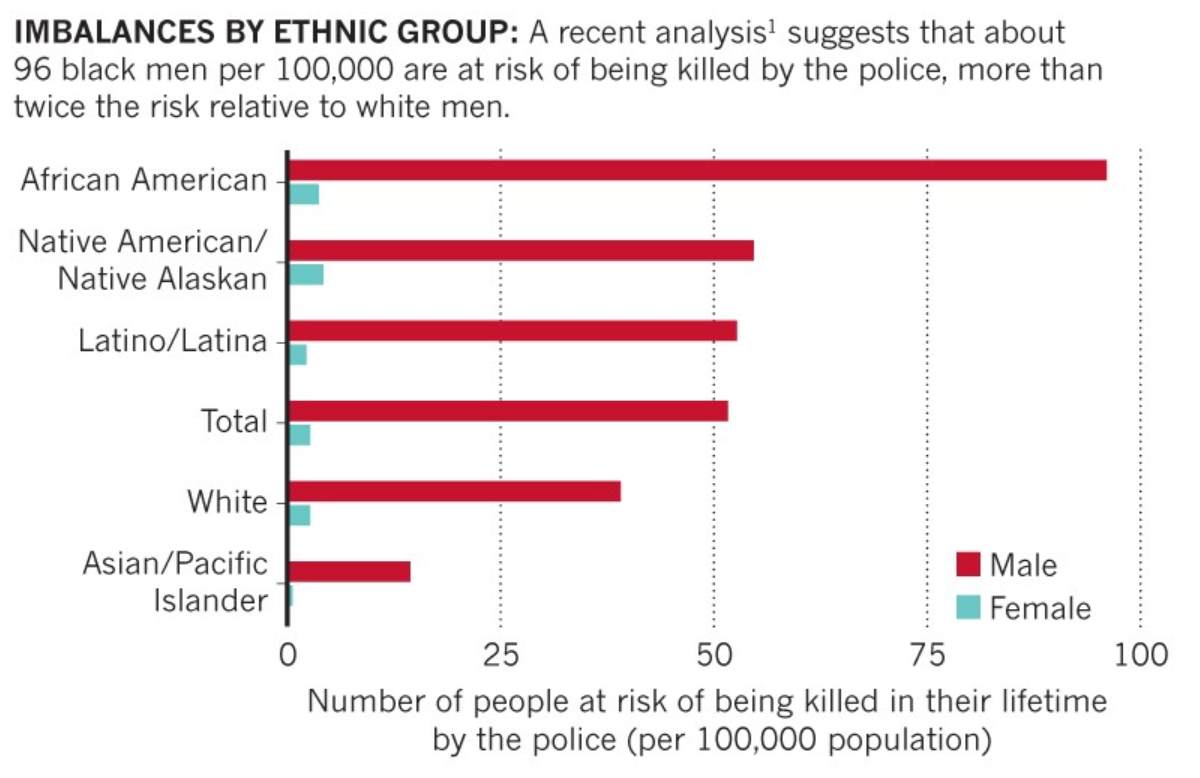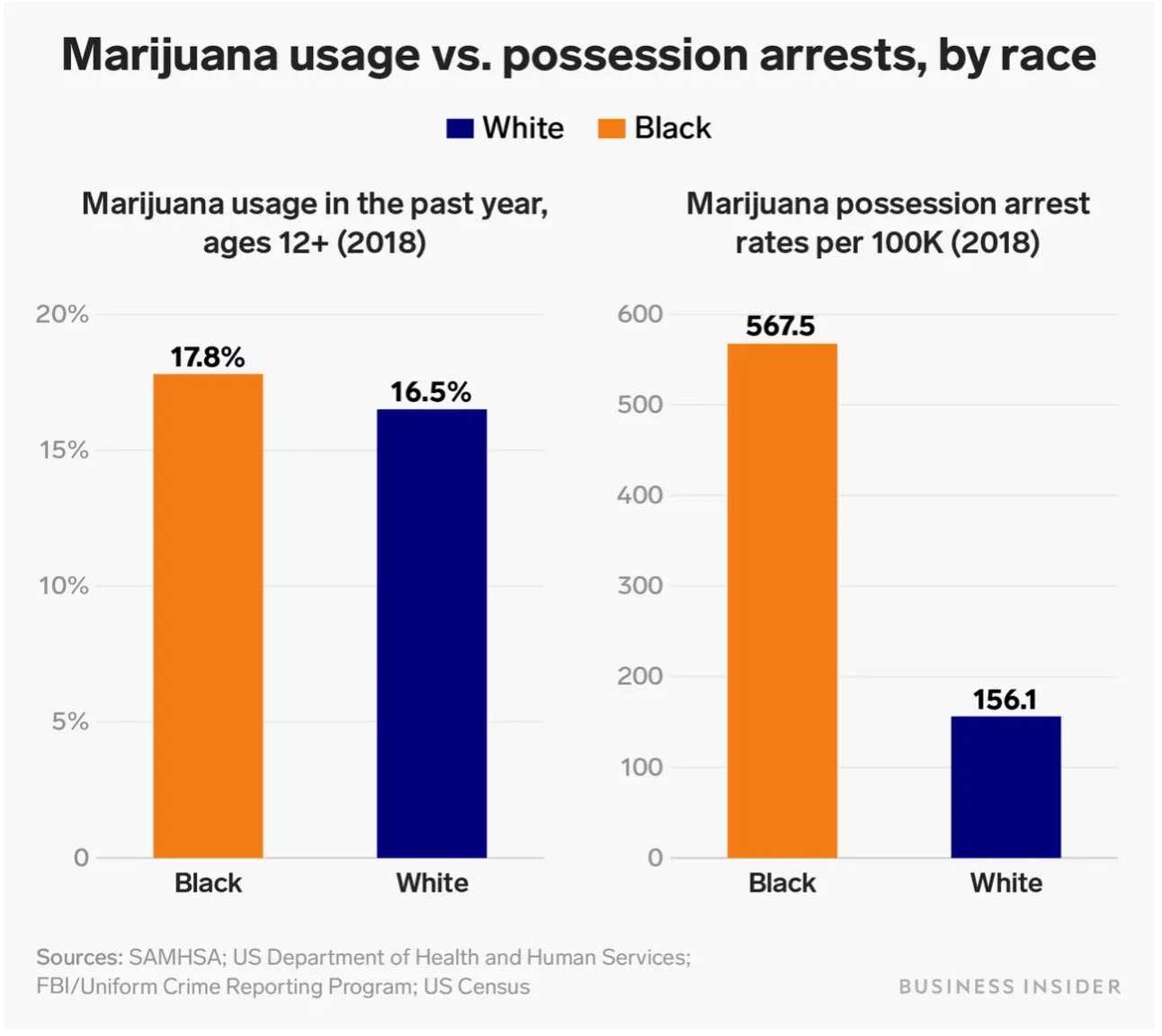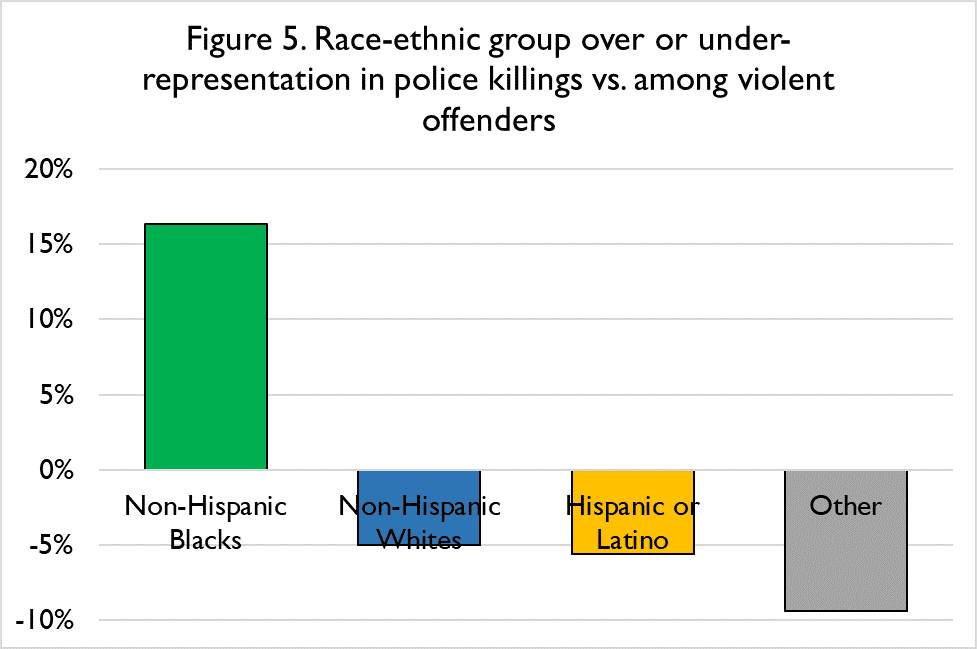From Jacob Blake, to George Floyd, to Breonna Taylor, 2020 has seen immense pressure to re-examine how the police interact with society. The oft-cited statistic that Black individuals are several times more likely to be shot during police interactions has come under intense scrutiny as a result. While the generalized viewpoint on the left is that this is evidence of systemic racism, skeptics on the right counter that this is a result of Black people being responsible for a disproportionate amount of violent crime, not systemic racism in the police. At the same time, there’s an increasing number of voices on the right that acknowledge the existence of systemic racism in policing, marking a shift in attitudes since the killing of Michael Brown and the national emergence of the Black Lives Matter movement in 2014.
This week, The Factual set out to survey how the media has covered the issue of systemic racism in the police, from its definition, to the evidence of its existence, to its skeptics, to the steps necessary to better understand the issue and how to address it.
A preponderance of evidence (cited on the left and right) confirms that systemic racism is at play in policing in the United States. However, insufficient data collection on police encounters makes it difficult to understand how, where, and to what degree it is influencing outcomes. Still, there are several areas of agreement where policy changes can be enacted while building a comprehensive, national dataset on policing to fully address the problem of systemic racism in policing.

Source: Nature
Please check your email for instructions to ensure that the newsletter arrives in your inbox tomorrow.
What Is Systemic Racism?
Perhaps one of the most challenging parts of tackling the issue is setting the right conceptual framework. The terminology is commonly misinterpreted to mean that all police are racist, a label that seemingly paints the diverse police community with broad strokes. Rather, the term is meant to convey that the system, rather than specifically the people within it, is prone to produce inherently unjust outcomes. This sentiment is best captured by the Washington Post’s Radley Balko, an opinion writer focused on civil liberties:
“Of particular concern to some on the right is the term ‘systemic racism,’ often wrongly interpreted as an accusation that everyone in the system is racist. In fact, systemic racism means almost the opposite. It means that we have systems and institutions that produce racially disparate outcomes, regardless of the intentions of the people who work within them.” – Washington Post
The Evidence For and Against Systemic Racism in Policing
The Factual surveyed a range of sources from across the media ecosystem, including 35 articles from 27 news outlets. Left-leaning and centrist sources are effectively unanimous in their acknowledgement of systemic racism in policing, and they collectively bring reams of evidence to the table. A contingent on the right maintains that systemic racism in the police is a liberal invention that ignores that Black individuals account for a disproportionate amount of violent criminals (though many on the left, for example, would contest that these rates of crime are themselves driven by racially-influenced institutions that have left Black communities disadvantaged). However, there are also numerous voices on the right that now acknowledge systemic racism in policing, demanding police reform side-by-side with voices from across the aisle.
On the Left
Even withstanding problems in data collection (explored further below), there are scores of articles and studies that showcase how race and policing outcomes are intertwined. Balko, for one, has accumulated a list of over 140 recent scientific studies that demonstrate racial disparities in policing and criminal justice at large (as well as 10 dissenting studies). The evidence strongly makes the case that systemic racism is an issue within the police, even when accounting for confounding variables such as demographics, geography, and suspect behavior:
- A study from the National Bureau for Economic Research and highlighted by Nature found that: “Based on information from more than two million 911 calls in two US cities . . . white officers dispatched to Black neighbourhoods fired their guns five times as often as Black officers dispatched for similar calls to the same neighbourhoods.”
- A study in Nature looked at 100 million traffic stops from across the country and found that while Black drivers are more likely to be pulled over, that difference decreases at night time and is correlated with how dark the sky is—meaning Black drivers were more likely to be pulled over when police can see that they are Black. The same study also noted that disparity persisted even though white drivers were more likely to have illicit drugs. (A 2006 study offers a dissenting viewpoint, finding little evidence in a similar analysis, but it looked at only 50,000 stops in a single location.)
- In over 1.8 million traffic stops in California, Black people were “far more likely to be stopped for ‘reasonable suspicion’ (as opposed to actually breaking a law) and were three times more likely than any other group to be searched, even though searches of white people were more likely to turn up contraband.”

Source: Business Insider
Such quantitative studies are accompanied by qualitative explorations of police departments which reveal the varying influences that can lead to racist practices. For example, Vox’s Zack Beauchamp writes, “psychological stressors combine with police ideology and widespread cultural stereotypes to push officers, even ones who don’t hold overtly racist beliefs, to treat Black people as more suspect and more dangerous. It’s not just the officers who are the problem; it’s the society they come from, and the things that society asks them to do.” Beauchamp reveals an internal culture where even non-racist police officers are prone to enforcing policies that disproportionately harm or target Black individuals, as seen elsewhere, like with stop-and-frisk in New York City and revenue generation in Ferguson, MO.
“The same basic idea that in white spaces, black people are presumptively suspect, is still playing out in America today. The idea that police officers should prevent crime in black communities, rather than simply policing the borders of black communities, is what gave us stop and frisk, which actually is not just from the 1990s or inspired by “broken windows” policing, but versions of it were playing out very officially in the 1960s.” – Vox
For many, the connections between today’s racially-disparate policing outcomes and the United States’ history of racist institutions, from the Jim Crow era to pre-Civil War cotton fields, is all too clear. As slave patrols gave way to more modern policing organizations, the goals of such institutions still included imposing a separate set of rules on Black communities (e.g., as the primary instrument for enforcing segregation). During the Civil Rights Era, police were a symbol of the forces seeking to deny racial equality, often brutally suppressing protests. As Balko writes: “The modern criminal justice system helped preserve racial order — it kept black people in their place. For much of the early 20th century, in some parts of the country, that was its primary function. That it might retain some of those proclivities today shouldn’t be all that surprising.”
On the Right
Most conservatives have seen enough evidence to agree that the problem of racial bias in policing is significant, but the sentiment is not yet uniformly accepted on the right. For skeptics, the argument against racial bias in policing is often structured around three points:
- Black individuals are more likely to be violent criminals, which means they are more likely to be killed by police.
- Unjustified shootings of Black individuals are a rare occurrence and are caused by “a few bad apples” in the police force.
- America is uniquely dangerous, and deadly encounters with the police are to be expected given how dangerous the job is.
On the first point, the Bureau of Justice Statistics shows that Black individuals committed 52% of all homicides between 1980 and 2008, and 22% of violent crime, despite being just 13% of the population. So, skeptics of institutionalized racism in policing argue it is to be expected that Black individuals are killed more often by the police, and they most often use work like that of Heather Mac Donald to substantiate their views. John McWhorter writing in Quillette points out the connection between poverty and criminal activity and how the headline statistic of higher death rates for Black individuals is not, by itself, evidence of racial bias:
“Today, the percentage of black people living in poverty is about two-and-a-half times that of whites (22 percent and 9 percent, respectively, in 2018). This disparity in poverty rates means black people are also disproportionately represented in rates of violent crime. Poverty can lead to dangerous survival choices that include lucrative criminal activity. Furthermore, outstanding warrants can cause suspects to flee law enforcement when stopped for other trivial infractions. This disparity cannot explain every fatal police shooting, including some of the most notorious examples, such as the shootings of Tamir Rice and Philando Castile.
Nevertheless, the tragedy remains: Higher aggregate crime rates lead to more encounters with police officers overall which increases the likelihood that a proportion of those encounters will get out of hand. Entrenched socioeconomic disparities should concern us all, and are as intolerable as cop murders. But the idea that the police murder out of racist animus is much less clear than we are often led to suppose.” – Quillette
On the second point, skeptics argue that deadly incidents involving the police are a rare occurrence, with 1,004 police-related killings in 2019 out of millions of interactions between police and the public (the Department of Justice estimated that number at 76 million in 2015). This perspective suggests that, while most police-related killings occur in contact with violent criminals, non-Black, non-violent suspects are also routinely killed by the police as the result of a “few bad apples” in the police force. Proponents of this view commonly point to this video of Mesa police killing an unarmed white man, Daniel Shaver, or this video of Dallas police killing Tony Timpa with a neck restraint, which they say received far less attention than George Floyd because it did not fit the narrative of racism against Black individuals.
However, some conservatives agree with the viewpoint that the consistent and widespread mistreatment of Blacks at the hands of police isn’t a problem of a few bad apples in the police force.
“A study by [Harvard economist] Roland Fryer that is often cited to support claims that systemic racism is nonexistent. It doesn’t find significant racial differences in lethal use of force, but it does find significant racial differences in how police use nonlethal force, even with a substantial set of controls.” – Washington Examiner
Again, from John McWhorter:
“Black men are more likely to be handcuffed, pushed against the wall, and treated with weapons drawn. Blacks are still somewhat more likely than whites to suffer physical and verbal abuse from the cops even when the behavior of the suspect is taken into account. Findings like these contribute to a general sense that cops treat black people as an enemy.” – Quillette
Jacob Sullum, writing for Reason, says “one need not believe every cop is a bigot to recognize that the problem goes beyond a few ‘bad apples.’” Lyman Stone, for one, helped capture this in an article in Public Discourse that demonstrated how non-Hispanic Blacks are overrepresented in police killings as a percentage of violent offenders, even while controlling for a number of variables.

Source: Public Discourse
Finally, the third point right-leaning outlets often make is that at least one police officer is shot every day in the U.S., and routine encounters like this traffic stop can turn deadly for police. In a nation with one of the highest gun ownership rates, it’s no surprise, they argue, that police officers approach every situation with a fight-or-flight mentality.
However, a growing number of right-leaning articles, including Lyman Stone’s, acknowledge that this level of violence is unacceptable and that Americans should expect better from police officers:
“Naturally, police officers defending their conduct will always claim that they were fearing for their lives and acting in self-defense. Still, sworn officers of the law have a job to be less afraid than the rest of us. The entire reason for the existence of police is to have an organized class of people who, when faced with violent people, will not panic, and instead will use force in a manner prescribed by law.” – Public Discourse
Amid growing evidence, it’s no surprise that even staunch, long-time skeptics of systemic racism in policing are starting to change their minds. In The Bulwark, Mona Charen writes, “I’ve come to believe that mistreatment of African Americans is not a myth and is not even uncommon.”
Please check your email for instructions to ensure that the newsletter arrives in your inbox tomorrow.
The Need for More Data
While skeptics remain, our analysis uncovered a clear disparity in terms of the quantity and quality of evidence used to substantiate respective positions, with left-leaning and centrist sources wielding a critical mass of scientific evidence which confirms systemic racism’s role in policing outcomes. The question then is not whether systemic racism exists but rather to what degree it explains the unequal outcomes in policing and how we can better understand its influences on Americans’ lives.
While there are scores of studies that have emerged on the subject, there is still a strong need for better data collection on policing in order to fully comprehend the scope and impact of systemic racism in policing outcomes.
As an example of the sorry state of data collection, the Washington Post began manually collecting data on the number of police killings following the events of 2014 and revealed that police “kill around 1,000 civilians each year — about twice the number previously counted by the FBI.” Other estimates put that number as high as 1,700.
That official figures are so far off from reality only scratches the surface of the issue, since to capture the universe of police interactions, we would need to understand every interaction, not just those that end up scrutinized in the news. Vice News, for example, further demonstrated that for each killing by the police, there are 2 to 3 other police shootings where someone does not die, meaning that the police shoot as many as 3,000 people on average every year. That says nothing, however, about the details of each traffic stop, house call, or any of the millions of interactions that happen between citizens and the police every year.
Broadly speaking, there is bipartisan agreement on the need to improve data collection as part of police reform, though there is disagreement about how far reforms should go. Not everyone supports the creation of a national police registry to track the conduct of individual police officers, for example, even though doing so could help identify which officers are more likely to use unwarranted force. By contrast, the use of body cameras by police officers has bipartisan support, but research shows that simply having such cameras isn’t enough; their efficacy is determined by factors like when police officers must have them on and whether footage must be used to inform incident reports. Such rules — just like the context of police interactions — vary by locality, further complicating the collection of nationwide, actionable statistics.
“Crime rates and policing practices differ across communities, as do the historical legacies that influence them. Aggressive policing over time can increase local levels of violence and contact with the police.” – Frank Rutgers via Nature
The variability of conditions across the United States complicate understanding where and to what degree systemic racism is driving policing outcomes and where other factors come into play. As FiveThirtyEight captures, the issue undoubtedly involves a range of issues and likely requires a range of solutions. In some cases, “bias among police officers makes them more likely to fire guns at black people than at white people who pose equal threats.” In others, disparities in policing outcomes may be “due more to systemic police practices than the prejudices of individual officers.” And in still others, the relatively higher rates of interaction between Black people and officers due to their disproportionate representation in reported crime may require addressing the “systemic causes of the crime disparity, including urban poverty.” Sometimes all three issues may be at play; at others, there may be as of yet unidentified factors helping to shape policing outcomes. The answers will only come with more data.
What Next?
Data collection will continue to improve, and as it does, we will emerge with a more accurate understanding of where, how, and to what degree systemic racism is responsible for the racial disparities in policing outcomes. The available evidence indicates that role is not a minor one.
While the debate may carry on for some, it would seem that a critical mass of public discussion now recognizes that systemic racism is a critical determining element of racial disparities in policing outcomes. Indeed, even while right-leaning Fox News publishes skeptic viewpoints, it also publishes viewpoints supportive of confronting systemic racism. In some ways, these changes may represent a shift from just years ago and could help finally enable systemic change, to the benefit of all Americans.
This article builds on our earlier work analyzing media coverage of the George Floyd protests this summer.
Appendix
This appendix shows each of the articles used to inform the findings of this article, as well as how the articles scored according to The Factual’s credibility algorithm. To learn more, read our How It Works page.

